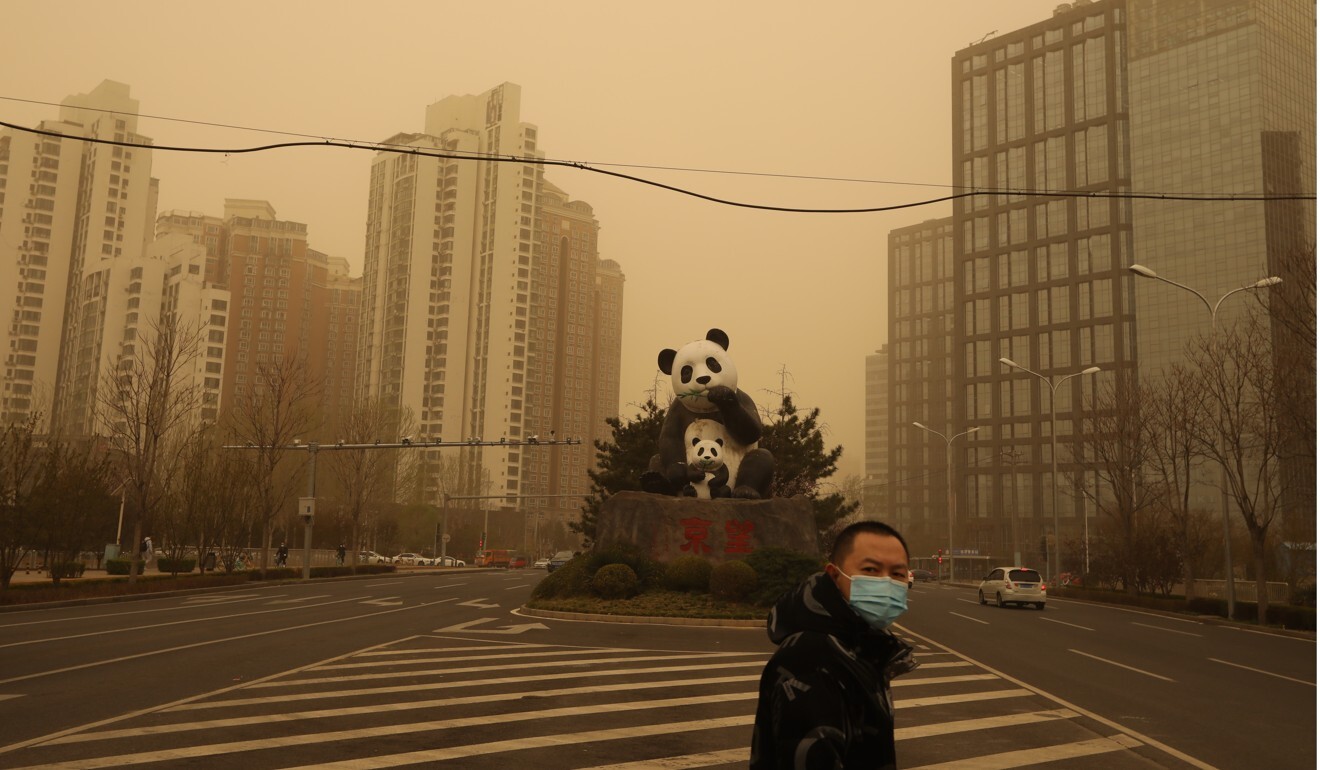
China pollution: Beijing sandstorm turns sky to yellow and sun to blue
- Capital hit by second sandstorm in less than two weeks as air quality index tops out at 500
- Inner Mongolia, Shaanxi, Shanxi, Hebei, Tianjin, Liaoning and Jilin also affected, Xinhua says
A sandstorm that hit Beijing on Sunday morning pushed air pollution levels off the charts, turned the sky yellow and reduced the sun to a blue dot.
The storm was the second to hit the Chinese capital in less than two weeks and came after the Beijing Meteorological Bureau issued a yellow warning (the second lowest in a four-tier system) on Saturday. It also warned of high winds and advised citizens to stay at home where possible.
As of noon on Sunday, the city’s air quality index had stopped rising, after hitting the maximum reading of 500.
On the Chinese social media platform Weibo, people shared pictures of the “blue sun”, a celestial phenomenon first seen in the skies above Beijing when the last sandstorm hit on March 15.
A Beijing Evening News report said the optical illusion was caused by “Rayleigh scattering”, which explains how the colours that make up sunlight are diffused by particles in the air.

The sandstorm was caused by strong winds carrying dust from drought-hit Mongolia and other parts of northwest China.
Xinhua said Inner Mongolia, Shaanxi, Shanxi, Hebei, Tianjin, Liaoning and Jilin had also been affected by the storm on Sunday.
Visibility in Beijing was reduced to less than 1,000 metres (3,300 feet).
Beijing Youth Daily reported that the sandstorm was expected to last for about 12 hours.
The bad weather caused flights delays and cancellations at several airports in northern China. In Inner Mongolia, which was worst hit, about 60 per cent of flights at Chifeng Airport and 50 per cent at Baotou Airport were cancelled on Sunday due to poor visibility, according to flight information app Umetrip.
But the poor conditions did not seem to dampen the enthusiasm of tourists and day trippers in Beijing, with crowds flocking to places like the Palace Museum and the Yuyuantan Park, according to their websites.
Wang Ji, director of the Beijing Climate Centre, was quoted by Beijing Youth Daily as saying it was rare to have had two large sandstorms in less than two weeks. The Chinese capital recorded just one in the whole of last year.
The National Meteorological Centre said the sandstorm that hit the north of the country earlier in the month was the worst in a decade, with 12 provinces blanketed in yellow sand and dust.

